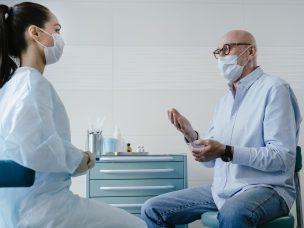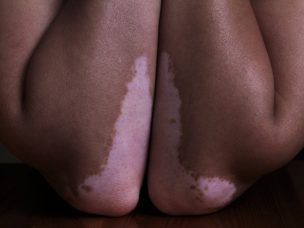Dermatology
Alopecia Areata and COVID-19
There is an association between the development/exacerbation of AA and SARS-CoV-2 infection. However, more studies are required to evaluate this association and contribute to improvement in the dermatological and psychological outcomes in patients with COVID-19. COVID-19 is a viral SARS-CoV-2 infection associated with several immune-related dermatological conditions. Alopecia areata (AA) is an autoimmune disease with...
Treatment of Pediatric Alopecia Areata
A recent systematic review assessed different treatment modalities for pediatric Alopecia areata (AA). Topical corticosteroids are the first-line treatment of AA in children. Alopecia areata (AA) is an auto-immune disorder that involves non-scarring hair loss. AA has a slightly greater prevalence in the pediatric population than in adults. Approximately 80% of individuals with patchy limited...
Ritlecitinib and Brepocitinib for Scalp Alopecia Areata Biomarkers
The treatment of AA with brepocitinib and ritlecitinib is associated with a reduction in the SALT scores. This is also related to the downregulation of TH1 cells and the upregulation of hair keratins. Future clinical trials are required to assess the safety, efficacy, dosage, and duration of treatment with JAK inhibitors. Alopecia areata (AA) is...
Development of Alopecia Areata Scale for Clinical Use
A group of 22 US board-certified dermatologists have endorsed the alopecia areata (AA) disease severity scale. The scale assesses the extent of hair loss on the scalp, hair loss in the special hair-bearing sites, previous treatment response, psychological impact, and diffuse and rapid hair loss to evaluate the severity of AA. Alopecia areata (AA) is...
Comparative Study of Different Treatment Modalities for Alopecia Areata
A combined treatment modality comprising ILC and carboxy therapy is an effective treatment option for stimulating early hair growth in individuals with AA and patchy hair loss. Alopecia areata (AA) is an autoimmune disease that has no standard medical treatment. This prevalent autoimmune condition follows an unpredictable course and is associated with patchy hair loss....
Natural Ways to Improve Skin Discoloration From Vitiligo
Vitiligo causes a loss of pigmentation or color in the skin, which can often lead to feelings of self consciousness. However, there are different options that may be able to help improve discoloration. Skin discoloration from vitiligo can profoundly affect a person’s self-esteem. In addition to being physically uncomfortable, it can also make someone feel...
Living With Vitiligo
Living with vitiligo can be difficult and stressful. However, there are ways to improve quality of life with vitiligo. Vitiligo is an autoimmune disease that causes the skin to lose its color. It can affect any area of the skin, although it tends to appear on the face, neck, and scalp, as well as around...
Vitiligo Versus Albinism
Vitiligo and albinism are often characterized by similar signs and symptoms. However, there are several important differences between the two conditions. Vitiligo and albinism are both conditions that can cause a person’s skin to lose its pigment. While they may sound similar, they are actually very different. What are the main differences between vitiligo and...
Vitiligo and Sun Exposure
Vitiligo leads to the loss of pigmentation, which may increase the risk of greater damage from the sun. It’s critical for people with vitiligo to protect their skin from sun exposure. Vitiligo is a skin condition that causes the loss of melanin, which is responsible for giving your skin its color. This makes it very...
More Medical News














